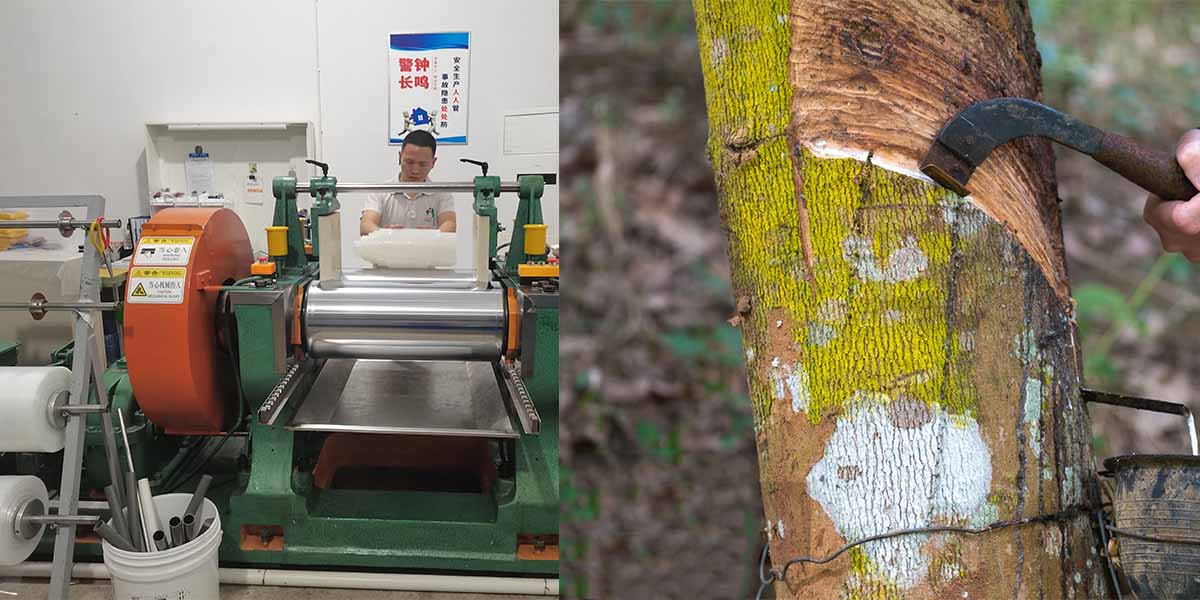Silicone and rubber are both elastic polymers. Whether in daily consumption or industry, their applications are very extensive, and often you will see their presence in daily life, including cookware, kitchenware, clothing and footwear, medical equipment, home furnishings, electronic products, and sealants used in buildings and cars. So how do you distinguish them? In this article, we mainly distinguish between silicone and rubber based on their atomic structure. The majority of rubber structures are carbon carbon double bonds. The structure of silicone is a silicon oxygen single bond.

Below, we will differentiate them based on their respective definitions, characteristics, and applications.
What is silicone?
Silicone is an artificially synthesized chemical material that contains silicon, oxygen, carbon, and hydrogen in its structure. Unlike natural rubber, silicone almost always requires a series of complex processes to be produced. It is one of the family members of rubber. This synthetic material mainly consists of silicon atoms and oxygen atoms sharing four valence electrons to form a silicon oxygen bond, and this skeleton is repeated to synthesize a long chain polymer. It is commonly used in consumer goods such as bibs, pacifiers, bottles, tableware, and kitchenware.
What is rubber?
Rubber is also an elastic polymer that can be divided into natural rubber and synthetic rubber, which can be extracted from the sap of some plants and can also be manufactured through chemical reactions (artificial synthesis). The products we see or come into contact with in our daily lives, such as car tires and sealing rings.
Comparison of the respective properties of silicone and rubber and their different applications
Although natural rubber can work at lower temperatures (-50°C), it is unable to operate in environments above 80°C and begins to deteriorate. When the temperature reaches 120°C, it begins to melt. The temperature of silicone rubber is usually -50°C-+230°C. The working temperature of silicone with certain specific properties can be -100°C-+300°C. Obviously, the temperature resistance of silicone is much higher than that of natural rubber, and it is especially suitable for industrial applications where temperature is strict. Silicone can obtain excellent flame retardancy by adding specific fillers. A common application is wires and cables.
Because the silicon-oxygen bond energy is greater than the carbon-carbon double bond energy, silicone is more stable in the face of extreme temperatures than rubber.
Silicone has excellent weather resistance and will not fail due to exposure to ultraviolet rays, ozone, or rain. As the time of UV exposure increases, the density, hardness, color, etc. of rubber will be affected, and eventually, it will age severely and even be easily torn. Silicone also has long-term chemical resistance, making it ideal for outdoor applications such as window and door sealing.
For high-wear industry applications, natural rubber has higher mechanical properties, such as tear strength, tensile strength, and abrasion resistance. For industries that require extremely high wear resistance, such as conveyor belts and tire treads, rubber is an excellent choice.
For many parts manufacturers, budget safety and hygiene issues are major considerations in their selection. Rubber generally needs to add fillers that are harmful to the human body to achieve stable waterproof and insulating properties. It is often used in automobile sealing, insulating gloves, and electronic products. Silicone is made by artificially extracting metallic silicon and adding different fillers to synthesize silicone with specific properties. This production process does not require the addition of toxic stabilizers such as bisphenol A, BPS, and phthalates. In practical applications, silicone has a long service life, up to more than 30 years, and can withstand external force or pressure for a long time without cracks. Compared to rubber, it is more resistant to corrosion and extreme temperatures. These unique capabilities make it an ideal material for applications in the medical, food processing, and sealing industries.









